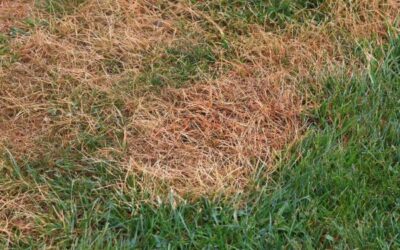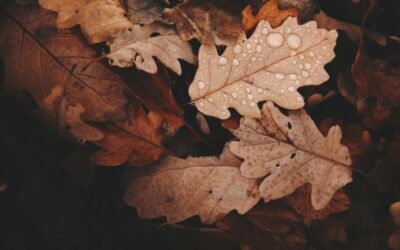Why Shade Gardens Are Worth It
Shade can feel like a limitation, but it is one of the best opportunities in a landscape. Shaded spaces stay cooler in summer, need less water once established, and invite a calmer, woodland feel. With the right structure and plant palette, a shade garden in Central Virginia can be lush from February hellebores through fall ferns and berries. The key to low maintenance is designing for what shade does well – steady moisture, even temperatures, and foliage that carries the show.
Define Your Shade – Mapping Light and Moisture
Not all shade is the same. Dappled shade under high trees supports many flowering shrubs. Bright open shade on the north side of a house behaves like half sun. Dense, dry shade under mature oaks needs different plants than a moist stream edge.
Spend a sunny day checking three times – morning, midday, and late afternoon. Note where light moves, where water lingers after rain, and where wind funnels between buildings. These observations guide plant choice and spacing so you do not fight your site later.
Start With Structure – Bones That Reduce Maintenance
A strong framework makes a shade garden easier to live with. Use a few well-placed evergreens and simple hardscape to anchor the space.
- Evergreen anchors: inkberry holly (Ilex glabra), leucothoe, aucuba for deep shade, and mountain laurel in protected spots
- Small understory trees: redbud, dogwood, serviceberry for light or dappled shade
- Simple hardscape: a curved stepping-stone path, a modest seating pad, and clean steel or brick edging
Good structure keeps foot traffic off planting areas, controls mulch, and gives winter interest so you do not feel obligated to replant constantly.
Right Plant, Right Place – Proven Performers for Central Virginia Shade
Choose plants that look good most of the year and ask for very little. A few reliable categories:
- Ferns: Christmas fern, autumn fern, lady fern. These knit space together and are largely deer resistant.
- Evergreen workhorses: hellebores, epimedium, mondo grass, pachysandra alternatives like Allegheny spurge.
- Native groundcovers: Pennsylvania sedge, golden ragwort, wild ginger, foamflower, woodland phlox.
- Perennial color and texture: heuchera, pulmonaria, hosta where deer pressure is low, Solomon’s seal, toad lily for late blooms.
- Shrubs for part shade: oakleaf hydrangea, smooth hydrangea, Virginia sweetspire, bottlebrush buckeye in larger gardens.
Aim for plants that hold attractive leaves for a long season. Flowers are a bonus. Foliage is the backbone that keeps care simple.
Layer for Texture – Foliage First, Flowers Second
Shade rewards subtlety. Build layers so something reads well from every angle.
- Upper layer: small trees or large shrubs create ceiling and scale
- Middle layer: hydrangea, sweetspire, and bold hosta or hellebore clumps for volume
- Lower layer: a matrix of sedges, ferns, and groundcovers to smother weeds
Mix leaf shapes – broad, strappy, and ferny – and mix finishes like matte and glossy. This variety gives depth in low light so the garden looks thoughtfully designed without weekly attention.
Build Better Soil – Mulch, Compost, and Drainage
Most shade gardens live under trees, which means root competition. Improve soil slowly and gently.
- Top-dress with compost each spring – a thin layer under the mulch is enough
- Maintain 2 to 3 inches of shredded hardwood mulch – never pile against stems or trunks
- After heavy rain, watch for standing water – if you see puddles, add organic matter and consider a discreet drain or raise plant crowns slightly
Leaf litter is not the enemy. In many shaded beds, chopped fallen leaves are the best mulch you can use. They feed soil life and look natural.
Smarter Watering – Keep It Consistent and Hands-off
Shade needs less water than sun, but new plantings still require consistency. Install a soaker hose or drip line under the mulch and run it from a simple battery timer. Water deeply and less often – generally once per week in the first season unless rain does the job. By year two, many shade plantings in Central Virginia need supplemental water only during long dry stretches.
Pathways, Edging, and Groundcovers – Weed Control by Design
Weeds thrive where edges are fuzzy and soil is exposed. Reduce maintenance with simple details.
- Define edges with steel or brick. Crisp edges keep mulch where it belongs.
- Use a continuous groundcover matrix. Pennsylvania sedge, Allegheny spurge, golden ragwort, or epimedium fill space and block weeds.
- Keep paths breathable. Fines like stone dust over compacted soil, with stepping stones set flush, make it easy to walk and easy to maintain.
When edges and paths are right, your weekly task becomes a quick tidy rather than a rescue mission.
Containers in the Shade – Pop of Color Without the Work
A few containers can brighten doorways and seating areas. Use self-watering planters if possible and group pots where irrigation reaches. Good shade annuals include begonias, New Guinea impatiens, torenia, coleus, and caladiums. Combine one bold foliage plant with two supporting textures so you can water, pinch once or twice, and enjoy. In fall, swap to small mums or heuchera for a fresh look that carries through the season.
A Simple Seasonal Care Plan – 15 Minutes at a Time
Low maintenance does not mean no maintenance. It means short, predictable tasks.
- Early spring: cut back old fern fronds and epimedium flower stems, top-dress with compost, refresh mulch
- Late spring: light edging touch-up, check drip lines, spot-weed before invaders root deeply
- Mid-summer: shear golden ragwort or groundcovers if they creep onto paths, deadhead hydrangeas only if they flop into walkways
- Early fall: evaluate thin spots and plug in more sedges or ferns, set timers to taper watering as nights cool
- Late fall: leave some seedheads for birds, remove only diseased foliage, and let clean leaves break down as mulch
Fifteen minutes a week is often enough once the garden has filled in.
Common Pitfalls to Avoid in Shade Gardens
- Planting sun lovers in bright shade and expecting full bloom
- Overwatering in dense shade where evaporation is low
- Ignoring deer and rabbits – choose resilient plants or plan deterrents
- Skipping the edges – without crisp edges, weeds creep in quickly
- Crowding shrubs – shade gardens look better with breathing room
Good design prevents most problems before they start.
Putting It All Together – A Small Backyard Plan
Imagine a 12 by 18 foot back corner under high canopy. Against the fence, plant three oakleaf hydrangeas to frame the view. In front, mass Christmas fern on the left and autumn fern on the right for texture that reads from the patio. Along the path, repeat clumps of hellebore and heuchera for evergreen presence and spring flowers. Fill the remaining open soil with a matrix of Pennsylvania sedge and Allegheny spurge so the ground is never bare.
Set a gentle S-curve stepping-stone path from the patio to a small gravel landing with a bench. Edge both sides with steel so mulch does not drift. Add two matching containers by the bench planted with big-leaf begonias and trailing ivy for a focal pop. The result is layered, tidy, and easy to keep that way.
Local Tips That Pay Off
Central Virginia summers can be humid and winters can bounce above and below freezing. Choose varieties that shrug off both.
- Heat tolerant heuchera cultivars hold color longer
- Autumn fern takes summer heat and still looks good in December
- Oakleaf hydrangea blooms on old wood – prune lightly right after flowering if needed
- Sweetspire tolerates wet and dry cycles, which makes it forgiving near downspouts
These small choices are what separate a garden that constantly needs attention from one that practically takes care of itself. If you want a shade garden that looks intentional and stays low maintenance, the process begins with a thoughtful site walk and a right-sized plant list. Jack’s Lawn Care & Landscaping can map your light and moisture, recommend a layered plant palette, install edging and paths, and set up drip irrigation so care stays simple.For custom design, expert planting, and seasonal tune-ups tailored to Central Virginia, trust Jack’s Lawn Care & Landscaping. We will help you create a shade garden that is beautiful, resilient, and effortless to enjoy in every season.



